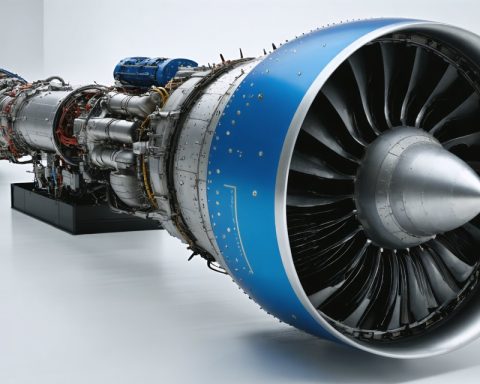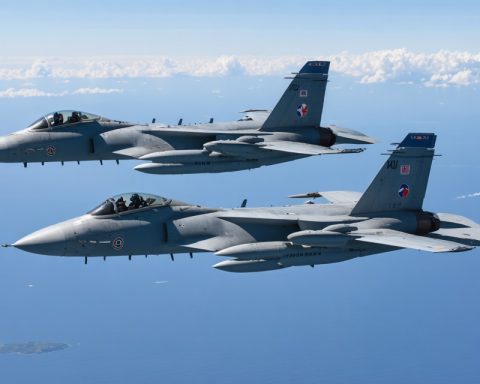- The JAS 39 Gripen is a marvel of engineering and tactical innovation, designed with Sweden’s Bas 90 strategy.
- It’s capable of using highways as runways, allowing for rapid refueling and redeployment.
- Equipped with ten hardpoints, advanced radar, and capable of deploying Meteor missiles, the Gripen E excels in combat and reconnaissance.
- Globally, the Gripen is favored for its cost-effectiveness and reliability, serving countries like Brazil, South Africa, and Hungary.
- It exemplifies that economical doesn’t mean compromised, emphasizing resilience and adaptability over sheer size and cost.
- The Gripen challenges the notion that innovation in military aviation must be expensive.
Emerging as a marvel of engineering and tactical innovation, Sweden’s JAS 39 Gripen stands as a testament to the art of survival in the skies. This fighter jet, designed with Sweden’s unique Bas 90 strategy in mind, redefines what it means to be combat-ready. Amidst a landscape where threats loom large and unpredictable, Sweden found inspiration not from towering airfields but from the very roads snaking through its countryside. Picture this: highways transforming into runways, where the Gripen touches down with the grace of a ballet dancer, ready to refuel in mere moments before launching back into aerial ballet.
The Gripen E continues this tradition with ten hardpoints, cutting-edge radar systems, and the ability to wield long-range Meteor missiles. The sky is its playground, whether engaging in air-to-air combat or surveying vast terrains for reconnaissance. This airborne powerhouse doesn’t merely aim to outrun its adversaries but outsmart them, harnessing advanced technology to stay one step ahead.
Globally, the Gripen illustrates a compelling case for why economical doesn’t equate to compromise. From the vibrant cities of Brazil to the rugged landscapes of South Africa and Hungary, nations trust this agile bird of prey to guard their skies. Its low operational cost and unmatched reliability make it a darling of modern air forces.
The Gripen isn’t just about cutting-edge technology; it’s about an ethos of resilience and adaptability, mirroring Sweden’s own strategic foresight. In an era dominated by costly fifth-generation fighters, the Gripen reminds us that innovation can also mean smarter, not just bigger.
Unveiling the Secret Behind the JAS 39 Gripen: Why It’s Taking the Skies by Storm
Features, Specs & Pricing of the JAS 39 Gripen
The JAS 39 Gripen fighter jet, developed by Saab, is a multi-role aircraft known for its agility, efficiency, and advanced technology. It is designed with the ability to operate from short and unprepared road strips, a feature that ties into Sweden’s Bas 90 air base system. This design allows for quick deployment and recovery, leveraging Sweden’s unique defensive strategy.
Key Features:
– Radar Systems: Equipped with the Raven ES-05 active electronically scanned array (AESA) radar, which enhances situational awareness.
– Armament: Capable of carrying a variety of weapons, including long-range Meteor missiles and a complement of air-to-surface weaponry.
– Flight Characteristics: Designed for high maneuverability with a delta wing and canard configuration, allowing for superior agility in combat.
Pricing:
The cost of each Gripen varies based on configuration and quantity. On average, the Gripen E version costs approximately $85 million, a competitive price compared to other fourth and fifth-generation fighters.
Real-World Use Cases
The Gripen is in service in several countries beyond Sweden, including Brazil, South Africa, Hungary, and the Czech Republic. Each nation values the Gripen for its adaptability to different combat roles—ranging from air policing and national defense to combat and reconnaissance missions. Brazil has recently acquired the newer Gripen E, which integrates local defense requirements into its design.
Market Forecasts & Industry Trends
With increasing geopolitical tensions and the push for cost-effective defense solutions, the Gripen is poised for continued interest globally. As nations seek to modernize their air forces without the hefty price tag of fifth-generation fighters, the Gripen offers a strategic compromise with its blend of affordability and advanced features.
– Trend: Growing demand for versatile fighters that can multi-task across various combat scenarios.
Reviews & Comparisons
Experts often compare the Gripen to aircraft like the F-16 and the Eurofighter Typhoon. While the F-16 is renowned for its long service history and the Typhoon for its high performance, the Gripen stands out for its cost-effectiveness, ease of maintenance, and operational flexibility. It has one of the lowest operational costs among modern fighters, which makes it an attractive option for countries with limited defense budgets.
Controversies & Limitations
While the Gripen is lauded for its many benefits, some critiques point to its payload capacity and the initial acquisition cost as potential drawbacks. The model lacks the “stealth” capabilities of more modern fifth-generation fighters, which can be a limitation for nations prioritizing such technology.
Security & Sustainability
Saab has prioritized sustainability through eco-friendly manufacturing processes and materials. With an emphasis on reducing the environmental impact, the Gripen’s operational logistics have been fine-tuned to minimize fuel consumption.
Pros & Cons Overview
Pros:
– Cost-efficient with low operational costs.
– High maneuverability and short takeoff/landing capability.
– Advanced technological systems, including AESA radar and data links.
Cons:
– Smaller payload when compared to some contemporaries.
– Lacks stealth capabilities found in fifth-generation aircraft.
Actionable Recommendations
– For Air Forces: For countries looking to upgrade their fleet without breaking the bank, consider the Gripen for its proven track record and operational efficiency.
– For Military Analysts: Monitor ongoing developments in Gripen export deals as these will offer insights into market trends and emerging strategic alliances.
– For Defense Suppliers: Look at potential collaborations for localized adaptations of the Gripen to meet unique geographic or tactical needs.
For more information on Saab and its defense products, visit Saab.








